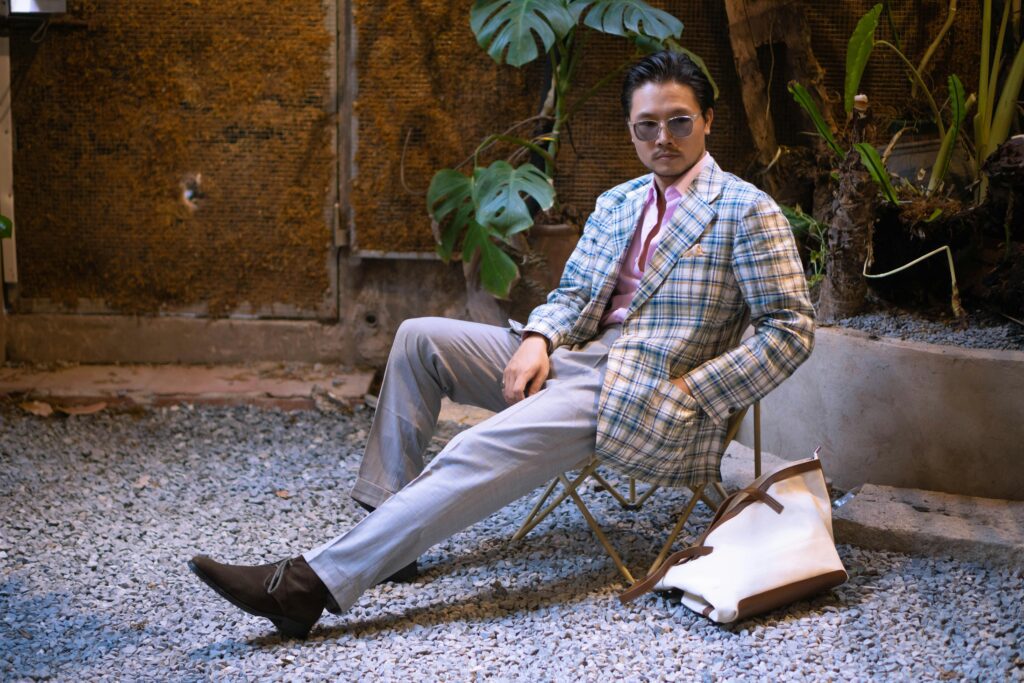
Table of Contents
Introduction To Formal Fashion For Men
Men’s formal wear is a big part of fashion and connotes elegance, class, and professionalism. Whether it is a business engagement, a wedding, or a black tie event, the right attire shall undoubtedly create an impression. The blog has been designed to assist men in choosing while also styling formals with a rich history, must-haves, trends, and care.
History and Evolution of Formal Fashion For Men
It’s almost impossible to outline the history of men’s formal fashion, as it goes far back in time. Anyway, taking into consideration the rest of human history, the formal wear had changed with significant cultural and social changes during that century. The main tendencies in the formal dressing in the 19th century were defined by frock coats, waistcoats, and cravats. At the turn of the 20th century, the modern suit with tailored jacket and trousers had already taken over. Actually, after World War II, it was dominated by the lounge suit out of which grows contemporary formal wear.
From then to now, through influences by the style icons, socio-cultural revolution, and fabric innovations, it has evolved. Today, an assortment of changes in the realm of modern men’s formal wear can be witnessed—a fusion of old-world charm and today’s trends—carrying flexibility for various occasions. In a broad canvas, the change also represents the paradigm shift from tightly dressed code of dressing in professional circles to loose, flexible, and general attire in working spaces today.
Key Elements Of Formal Fashion For Men
Suits are the core part of men’s formal wear. Different types of suits include the single-breasted, double-breasted, and tuxedos. Single-breasted suits are the ones that have got only one row of buttons with a narrow overlap, while double-breasted ones have two parallel rows of buttons. The latter are worn on the most formal occasions, often having satin lapels and side stripes on the trousers. In these suits, the fabric—wool, cotton, or linen—plays an important role in comfort and appearance. Second, the knowledge of different suit cuts—like slim fit, regular fit, and classic fit—goes a long way in choosing one that complements you more.
Shirts: The formal shirts to complement the overall getup. Dress shirts, normally made from cotton or cotton blended, can have a variety of styles, including spread collars, point collars, or wingtip collars. Tuxedo shirts further add elements of elegance, with pleated fronts or bibs. Furthermore, the fit varies; a well-fitting shirt is supposed to present a snug collar, a slim sleeve, and a tailored waist. The material should have the outstanding quality of cotton to allow a person to breathe and be durable for long hours of an event.
Pants: The formal trousers are supposed to match with the jacket color of a suit, neither a skin-tight model nor a broad one, either. Trousers also come either flat-front or pleated, and the kind of material used to make them is the same as with the suit. The tailoring on trousers is done to give the correct length so there is no appearance of lots of bunched up material at the ankles. The break—that is how much the bottom of the pants rest on your shoes—should be slight for a modern look.
Formal shoes: The dress is completed with some common preferences, which are Oxford, Derby, and Loafers. Oxfords are the most formal because of a closed lacing system, while Derbies give a slightly more relaxed fit. Loafers, less formal than the others, have their own wearing domain beasts business casual dressing. Leather shoes in black or brown are flexible enough, complementing almost any type of a suit. Fine stitching and good-quality leather are imagined main signs of shoes, for an even greater degree of class.

Accessories: Formal wear accessories imbue it with personality and panache. These would include ties, pocket squares, cufflinks, belts, and watches. When you select the accessories, ensure that they harmonize with the attire. For example, ties should have contrasting colors while a match would be to the shirt; cufflinks should have the same color as other metallic objects on your attire. Not to forget, the right kind of watch would add functionality as well as style to the wearer’s wrist.
Choosing the Right Formal Fashion For Men
Dress code is very important in choosing the most appropriate formal wear. Under dress codes, it is important to note black-tie, white-tie, business formal, and lastly, semi-formal.
Black-Tie: Normally calls for a tuxedo along with a black bow tie, white dress shirt, black formal shoes, and, in some cases, a cummerbund or waistcoat.
White-Tie : The most formal dress code that demands a tailcoat, white bow tie, white waistcoat, and black formal shoes.
Business: Dark-colored suit, dress shirt, tie, and polished dress shoes, in a professional environment.
Less formal: More room is provided for having lighter-colored suits and less formal accessories.
Fit and tailoring definitely take precedence over any other factor. A maladjusted suit kills the whole look. But in this regard, since custom tailoring has become very widely popular and affordable, one needs not worry about such a catastrophe. Custom tailoring will make sure the fit is perfect and great for comfort and looks. Color coordination is also of prime importance, although the navy, charcoal, or black-colored outfits are timeless and versatile. The fabric varies according to season and occasion, from lightweight to keep it cool in summer and heavier in winter.
Men’s formal wear trends are all about being influenced by the minds of designers, celebrities, and cultural forces. Current trends include slim-fit suits, bold patterns, and unusual colors. One of the trends that at present is making a comeback is the double-breasted suit, which instantly serves the style with chic vintage elegance. And, of course, there is the splendid addition of velvet suits or blazers that ring in that luxurious but uniquely textured feeling.
Seasonal trends also persuade; lighter weaves and pastel hues dominate spring and summer collections, while heavier weaves and darker tones are favored for autumn and winter. Patterned ties, pocket squares, and statement cufflinks can all be used to add a flair of personality to formal wear.
Further, wave after wave of sustainable fashion has penetrated men’s formal wear from eco-friendly fabrics to ethical manufacturing. With more and more men opting for brands that are driven by sustainability, even the production and consumption of formal wear have changed.
Care and Maintenance of Formal Fashion For Men
Care for and maintenance of proper wear help in extending their lives. A suit has to be dry cleaned from time to time, though not too often, to prevent damage to the fabric. Suits should be brushed after use to take off dirt, then hung on robust hangers to help keep their shapes.
Shirts go to launder often; collars and cuffs should be treated with a special cleaning. Ironing a shirt while just a bit on the humidity side allows for the finishing of the crispness. Formal shoes need to go to polish regularly and to store away with shoe trees to hold their shape.
Besides cleaning regularly, it is also important to rotate your formal wears so that they do not undergo excessive wear and tear. Store formal clothes in places that are well-ventilated in order to prevent mildew and mold. Use garment bags to protect from moths and dust.
Ensure that the formal wear is clean before it is sent for prolonged storage. Mothballs or cedar blocks can be used to prevent pests from coming near. The clothing should be aerated periodically to freshen the clothes kept in storage and maintain their shape.
Mistakes to Avoid in Formal Fashion For Men
A well-polished look will always help you avoid common mistakes. Over- or under-dressing for any occasion always keeps you in discomfort, and you act awkwardly. Always make sure to dress according to the code stated. Accessories that don’t match, like black belts and brown shoes, will destroy the look. And ensure that the fitting is good—nothing looks worse than an ill-fitting suit, which can be uncomfortable too.
Overlooking the importance of comfort is the other major mistake. In as much as looking good is important, one should prioritize comfort. Look for fabrics which are comfortable when they come into contact with the skin and even when one moves around.
Another mistake is leaving out the details. Small touches, such as having your tie correctly on, your shirt tucked in nicely, and your shoes well-polished, all work together to set your appearance to a satisfactory level. All of these little improvements show extra attention and elegance.
Moreover, this could lead to not updating your wardrobe. From time to time, evaluating your formal wear and incorporating the latest fashion helps to keep you refreshed and updated.

Conclusion
There is absolutely no doubt as to why it is so important for a man to invest in quality formal wear to create that impression. This fellow attempts to engage in understanding the history and evolution of men’s formal wear, picking up the right components, and keeping up with the latest trends. Proper care and maintenance, coupled with simple avoidance of common mistakes, will help your formalwear stay great over the years. Play with the styles and trends for self-expression while remaining elegant and sophisticated as formerly required.

